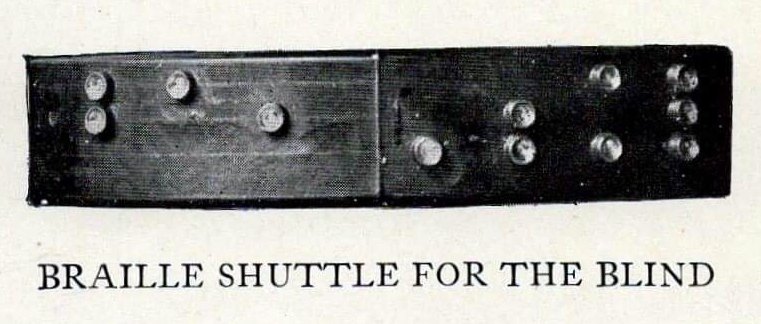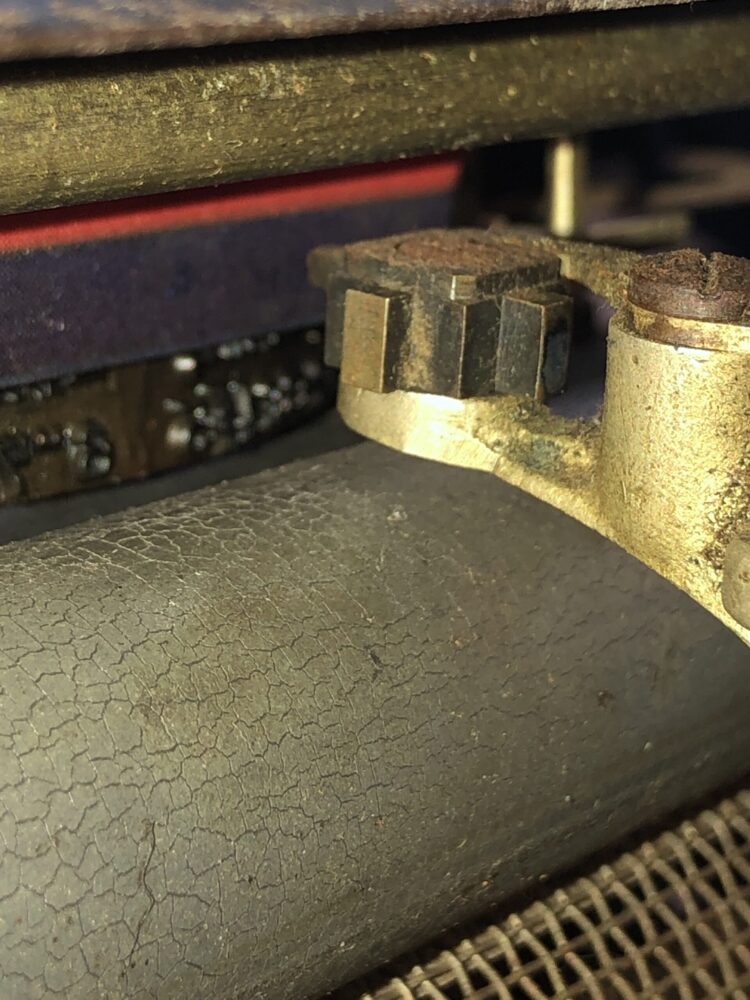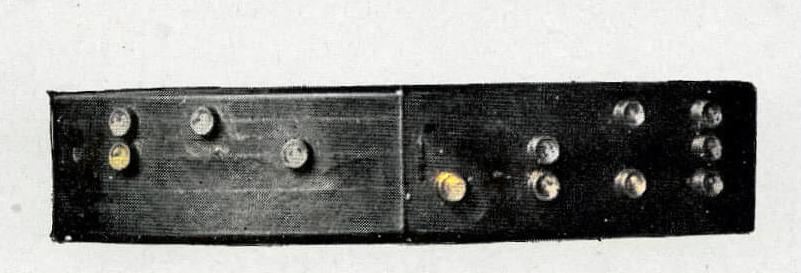I found a Hammond braille shuttle.
Well not physically. I found it in the archival catalog of a school for the blind. However the school is unable to locate it physically, so, the best I have is a photograph.
The previous theory for how a Hammond could type in braille was this: It created the braille bumps on the reverse side of the paper. The protruding shuttle braille “point” would press the paper into a concave hammer face, which came form the back. That was wrong.
Thanks to the tireless efforts of the AntiKey Chop, not only was a Hammond braille machine located for our study, but so was a photo of the actual shuttle. This page from a catalog for the No. 12 shows a photo of the braille shuttle.
Notice that the protruding bumps on the shuttle face have a concave face.

From this we can make a much better guess as to how the machine worked, but first a note on hammer faces. The Braille Hammond has four hammer face:




.
When used, the braille point pushes forward into the paper, pressing it into the concaved face of the braille shuttle, thus creating raised dots on the front of the page. A remarkable design. At last, the mystery is solved.

